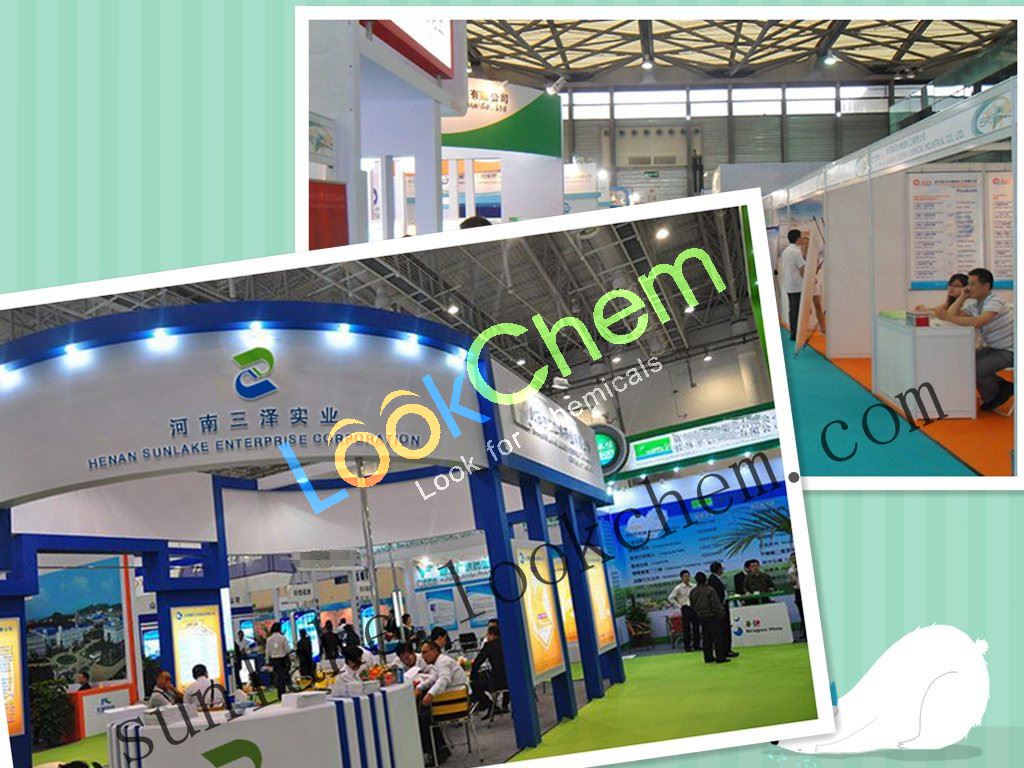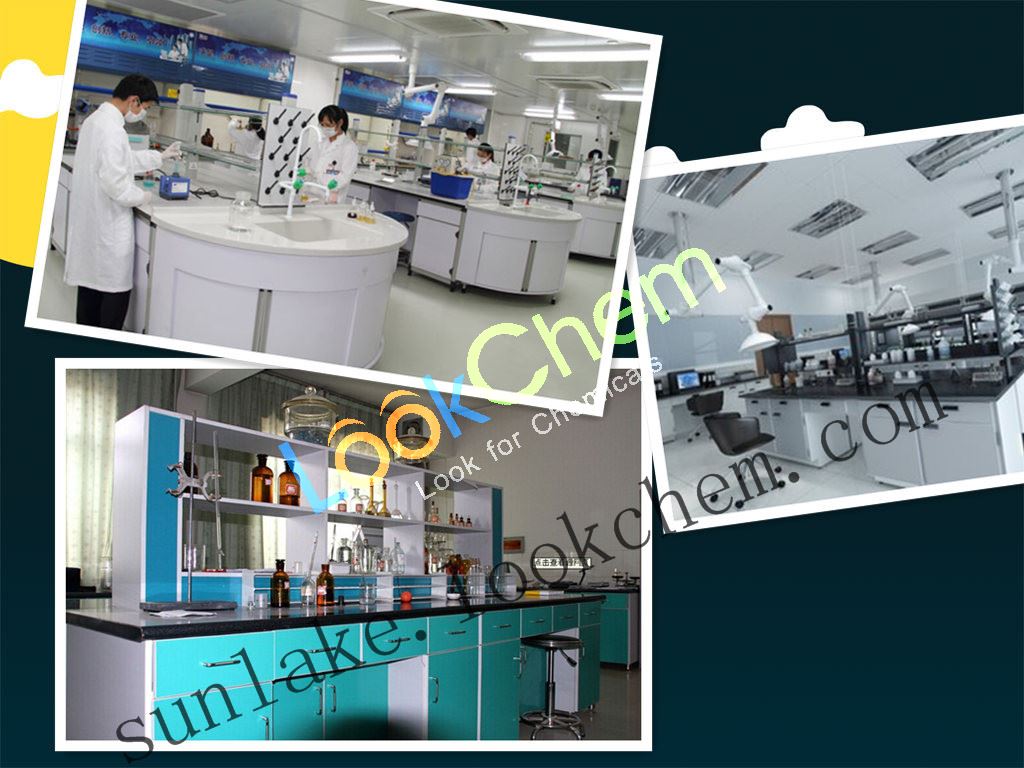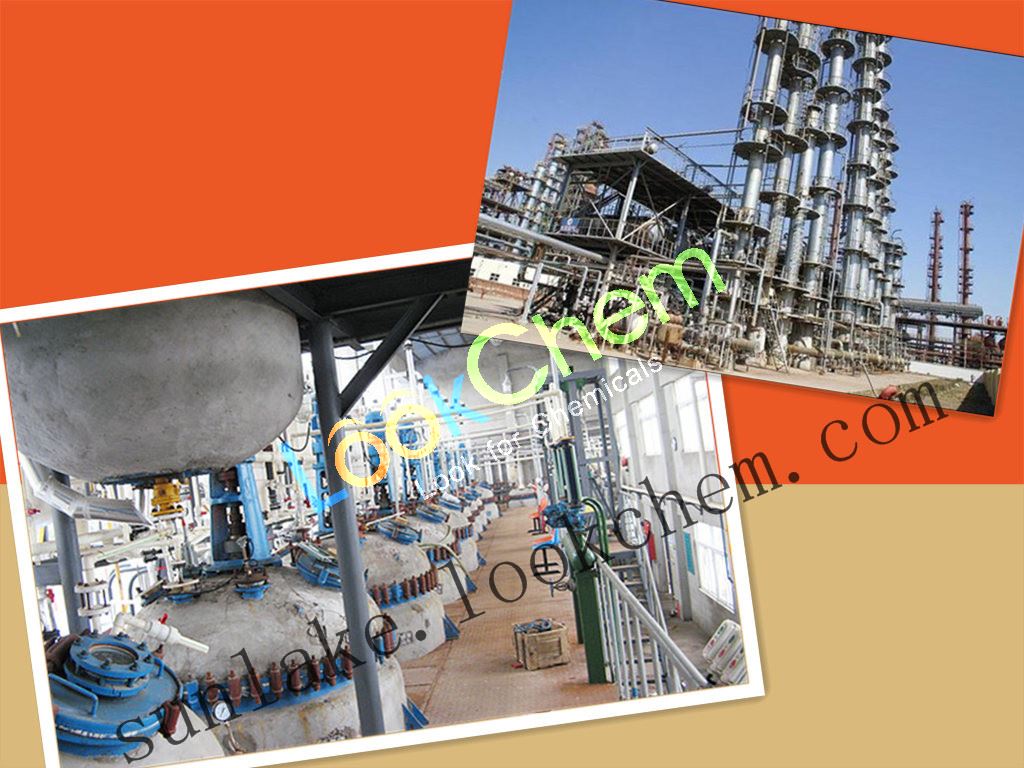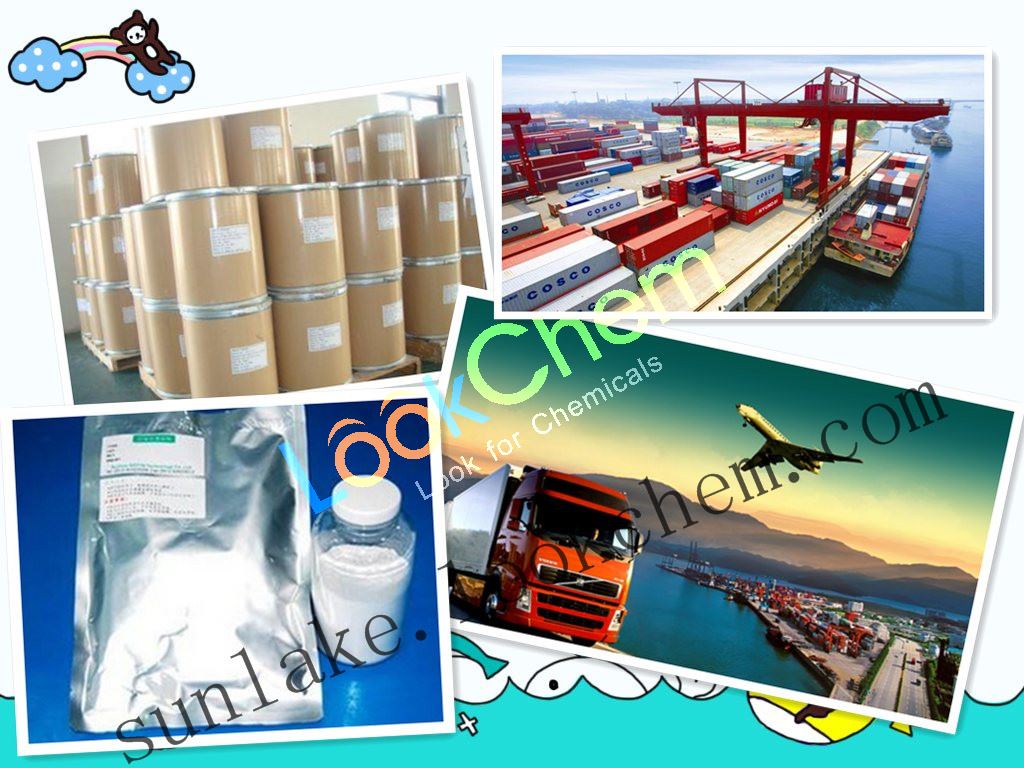Product Certification&
Enterprise Certification
Country: ![]() China (Mainland)
China (Mainland)
Business Type:Trading Company
Tel: 17734809689
Mobile:
Tel: 17734809689
Fax: +86-371- 86259723
Province/state: HENAN
City: ZHENGZHOU
Street: Mingmen International Center, NO.222 Dongming Road,Zhengzhou,Henan,China
MaxCard:
 Contact Suppliers
Contact Suppliers
CAS NO.541-15-1
1(10-100)Metric Ton1(10-100)Metric Ton
| L-carnitine Basic information |
| Product Name: | L-carnitine |
| Synonyms: | 3- CARBOXY-N,N,N-TRIMETHYL-2-PROPEN-1-AMINIUM CHLORIDE;3-HYDROXY-4-(TRIMETHYLAMMONIO)-BUTANOAT;3-HYDROXY-GAMMA-(TRIMETHYLAMMONIO)-BUTYRATE;LEVOCARNITINE;L-CARNITHINE;L-CARNITIN;L(-)-CARNITINE;L-CARNITINE |
| CAS: | 541-15-1 |
| MF: | C7H15NO3 |
| MW: | 161.2 |
| EINECS: | 208-768-0 |
| Product Categories: | FINE Chemical & INTERMEDIATES;Miscellaneous;chiral;Amino Acids;Ammonium Polyhalides, etc. (Quaternary);Quaternary Ammonium Compounds;L-Carnitine Series;Vitamins and derivatives;Food Additives;Aliphatics;Amino Acids & Derivatives;Intermediates & Fine Chemicals;Pharmaceuticals;pharmaceutical chemicals;fine chemicals, specialty chemicals, intermediates, electronic chemical, organic synthesis, food additives, pharmaceuticals;chemical reagent;pharmaceutical intermediate;phytochemical;reference standards from Chinese medicinal herbs (TCM).;standardized herbal extract;Inhibitors |
| Mol File: | 541-15-1.mol |
|
|
|
| L-carnitine Chemical Properties |
| mp | 197-212 °C(lit.) |
| alpha | -31 º (c=10, H2O) |
| refractive index | -32 ° (C=1, H2O) |
| storage temp. | 2-8°C |
| solubility | H2O: 0.1 g/mL at 20 °C, clear, colorless |
| Water Solubility | 2500 g/L (20 ºC) |
| Merck | 14,1849 |
| BRN | 4292315 |
| Stability: | Hygroscopic |
| CAS DataBase Reference | 541-15-1(CAS DataBase Reference) |
| Safety Information |
| Hazard Codes | Xi |
| Risk Statements | 36/37/38 |
| Safety Statements | 26-36-37/39 |
| WGK Germany | 3 |
| RTECS | BP2980000 |
| F | 3-10 |
| Hazard Note | Irritant |
| HS Code | 29239000 |
| Hazardous Substances Data | 541-15-1(Hazardous Substances Data) |
| MSDS Information |
| Provider | Language |
|---|---|
| L(-)-Carnitine | English |
| SigmaAldrich | English |
| ACROS | English |
| ALFA | English |
| L-carnitine Usage And Synthesis |
| Carnitine |
Carnitine is a kind of B-class vitamin. Owing to its similar structure as amino acids, some people therefore also classify it as an amino acid. Its main function is to supply energy through facilitating the transport of long chain fatty acids. This prevents the fat accumulation in the heart, liver and skeletal muscle. It can control diabetes, fatty liver, and the fat metabolism disorder in heart disease. Taking carnitine can reduce damage to the heart. It can lower the level of blood triglyceride and also have certain role in boosting weight loss. Carnitine can further enhance the antioxidant effect of vitamin E and vitamin C. Carnitine deficiency is sometimes congenital such as genetically deficiency of carnitine synthesis with symptoms including heartburn, muscle atrophy and obesity. Men need more carnitine than women. Vegetarian are more prone to get carnitine deficiency. If the body has sufficient iron, thiamin, vitamin B6, lysine, methionine and vitamin C, carnitine would not be lacking. Carnitine-rich foods contain meat and offal. Synthetic carnitine is divided into three forms including L-body, dextral and racemic with L-carnitine having the best efficacy. L-carnitine is a kind of compound with various kinds of physiological activities. Its major function is to promote the β-oxidation of fatty acid as well as regulate the acyl ratio inside mitochondrial to affect the energy metabolism. L-carnitine can participate in the transport of branched chain amino acid metabolites, and thus promoting the normal metabolism of branched chain amino acids. In addition, L-carnitine can take effect in the elimination and utilization of ketone bodies and play a role of biological antioxidants for scavenging free radicals, maintain the stability of the membrane, improve animal's immunity and the ability of anti-stress and disease resistance. Recent studies have shown that L-carnitine and acetyl-L-carnitine play an important carrier role on the sperm energy metabolism in mitochondria. It can clear ROS, and protect the function of sperm membrane. Oral administration of L-carnitine and acetyl-L-carnitine have certain effects on patients with small and weak sperm, such as increasing counter of both sperm moving forward as well as total mobile sperm, and thus increasing the clinical pregnancy incidence of women with high safety and efficacy. Clinical and Experimental Study abroad have suggested that carnitine therapy on men infertility is a new breakthrough in the field of drug treatment of infertility in recent years. The related in-depth research is necessary in order to further clarify the mechanism of action and obtain clear indications. L-carnitine can associate with the large amount of acyl-coenzyme derivatives existed in sick children with organic acids, fatty acid metabolism disease, being converted into a water-soluble acyl carnitine to be excreted from the urine. This process can not only helps to control acute episodes of acidosis, but also can also be effective in improving the long-term prognosis. L-carnitine is not a weight loss drug. Its main role is to burn fat which is not the same thing as losing weight. To use L-carnitine for losing weight, in addition to burning fat with its help, a lot of movement is still the key for weight loss; instead carnitine only play a supporting role. If exercise is not large such as just dieting, weight loss would not be boosted by taking L-carnitine. The above information is edited by the chemicalbook of Dai Xiongfeng. |
| Chemical properties and metabolism |
L-carnitine has a similar chemical structure with choline. Although with similar structure as amino acids, but it is not an amino acid because it is not involved in the biosynthesis of proteins. Since L-carnitine can be de novo synthesized by human and most kinds of animals to meet the physical demands, so it is not a vitamin in the true sense, but just a vitamin-like substance. L-carnitine is easily soluble in water with dietary carnitine being able to be completely absorbed by the body. The known in vivo absorption position of L-carnitine is the small intestine, but the exact absorption mechanism by which carnitine (free or esterified) penetrating through the intestine mucosa as well as exact site of intestinal absorption are unclear. Beside the intake of exogenous L-carnitine from food, humans can also de novo synthesize endogenous carnitine themselves. Liver and kidneys are the main organs of synthesizing carnitine biosynthesis, starting from lysine via ε- trimethyl -β-hydroxy-lysine, and generate γ-butyl betaine through aldolase and aldehyde oxidase, finally be converted to L-carnitine through hydroxylase. In addition to lysine, the L-carnitine biosynthesis in vivo also requires methionine and vitamin C, niacin and vitamin B6. Anatomy of rats has found that the highest concentration of carnitine is found in the adrenal glands, heart, bone, muscle, followed by adipose tissue and the liver, wherein the concentration in kidney and brain is 40 times as high as that in the blood. Owing to the different measurement method as well as the difference in experimental subject, the concentrations of carnitine in the body also varies with great fluctuation. Biological measurement has found that human plasma carnitine content is between 0.86 ~ 2.87mg/100mL. Method of Enzymology has found that muscle carnitine content is between 0.457 ~ 2.479μg/g (dry basis). Absorbed carnitine by the human body metabolism is excreted through urine in the form of the free carnitine. |
| History of discovery |
L-carnitine, formerly known as vitamin BT, was first discovered in 1905 by Russian chemist Gulewitsch and Krimberg from the meat extract. In 1927, Tomita and Senju determined its chemical structure. About 20 years later (1947), Fraenkel discovered that insects such as Tenebrio requires a certain factor presented in the yeast for their growth, called as vitamin BT at that time. Then in 1952, US Illinois State University, Carter et al. has confirmed that Vitamin BT was L-carnitine. Figure 1 the structural formula of L-carnitine |
| Physiological functions |
Since the finding of L-carnitine by Fritz in 1959, the role of L-carnitine on the fat oxidation process becomes the key focus of research. In 1973, Engel had reported the first case of carnitine deficiency and application of carnitine as treatment. It must be carefully noted that there are three kinds of optical isomers of carnitine, namely, L (L-), dextrorotatory (D-) and racemic (. DL-), wherein only L-carnitine has physiological activities; instead D-form and DL-form can competitively inhibit the activity of carnitine acetyltransferase (CAT) and carnitine fatty acyl transferase (PTC), and thus hindering the intracellular fat metabolism, and therefore being harmful to human nutrition. Clinical practice has proved that: oral administration, intravenous or intraperitoneal injection of D- or DL-carnitine can cause a variety of side effects including cardiac arrhythmias, muscle weakness, etc. Therefore, it is recognized that in 1984, among the three kinds of optical isomers, only L-carnitine is the valid component. Recent studies have also shown that L-carnitine also play certain role on promoting the utilization of ketones and nitrogen metabolism. 1. Promote transport and oxidation of fatty acids β- Oxidation of fatty acids occurs in the mitochondria of liver and other tissue. Known free fatty acids and fatty acyl coenzyme A both can’t penetrate through the inner mitochondrial membrane. Instead, acyl carnitine is able to rapidly penetrate through this layer of membrane, which confirming the L-carnitine is the carrier for transporter fatty acid from outside of the membrane into inside of the membrane in its acyl form. Detail of this transport mechanism is still unclear, but it is clear that carnitine acyl coenzyme A transferase (Carnitine acyl-CoA transferase) is a key enzyme in the process. It has two isozymes, one of which is the carnitine acyl coenzyme A transferase I located outside the membrane; when the first fatty acid is converted into fatty acyl coenzyme A through the enzyme acyl coenzyme A synthetase (Acyl-CoA-synthatase), it will be transferred through the membrane by being converted into acyl-carnitine under the action of carnitine acyl coenzyme transferase I. Then, under the catalysis of inner membrane carnitine acyl coenzyme transferase isozyme II, the transferred fatty acyl carnitine inside the membrane is again converted back into acyl coenzyme A form which can be directly utilized by the fatty acid metabolism enzyme, then following dehydrogenation, oxidation to generate energy. Figure 2 Transport of fatty acid in and outside of mitochondrial membrane Some people think that L-carnitine can also participate in the transport and excretion of other acyl group, thus preventing the body's metabolic poisoning caused by the accumulation of acyl group or facilitating the normal metabolism of some branched amino acids. 2. Accelerate the maturation of sperm and improve its activity L-carnitine is a kind of energy matter for sperm maturation which can increase both the amount as well as the activity of sperm. According to the investigation of 30 adults, within certain range, the amount and activity of the sperm is positively correlated to the supply of dietary L-carnitine. Moreover, the L-carnitine content in the sperm is also positively correlated to the content of L-carnitine is the diet. 3. Improve the body's tolerance Watanabe et al have found that L-carnitine can improve patients' disease tolerance in practice such as training time, maximum oxygen absorption, lactate threshold, and oxygen absorption threshold. Supplement L-carnitine in the body will cause certain improvement in the various kinds of above indicators. Oral administration of L-carnitine also increases the muscle endurance upon the maximum oxygen absorption by 80% and shortens the recovery period after strenuous exercise, and relieves the tension and fatigue after exercise. Santulli et al 1986 has found that L-carnitine can increase the growth rate of hatchery farmed sea bass and reduce the content of cholesterol and triglyceride content in fish tissue. Germany has reported that athletes who had taken L-carnitine for 3 weeks obtained significantly reduced body fat and increased proportion of protein with the weight being not affected. |
| Application and prospect of functional food |
L-carnitine, as a new kind of nutritional supplements, especially as the additive of baby formula, athlete food, and food for losing weight and bodybuilding, has been currently widely applied in functional foods. The commercialized L-carnitine is mainly its hydrochloric acid salt, tartaric acid salt and citric acid magnesium salts. 1. Application in infant formula food L-carnitine plays an important role in the baby’s metabolism process of taking fat as a source of energy. Owing to that the weak ability of baby of de no biosynthesis of L-carnitine can’t meet the demands of its normal metabolism, it must be ingested exogenous L-carnitine base in order to ensure the best in body fat oxidation state and provide enough energy to maintain normal body temperature of the baby. In addition, L-carnitine also has certain effects on boosting infant growth and development and improving metabolic balance. So it is necessary to strengthen the L-carnitine in infant food, especially in soy-based infant formula. Because of the low carnitine content in soy, the limit of L-carnitine content in infant formula food is 70 ~ 90mg/kg in China. Now China has carnitine fortified infant formula milk that has entered into market. 2. Application of athletes Food Decombaz J. et al have reported that after fierce exercise, the free carnitine content in human muscle tissue will decrease by 20% and the supplemental of carnitine can alleviate the fatigue of the body because L-carnitine can promote fat oxidation of the body as well as provide sufficient energy which is good for the sports endurance as well as explosiveness improvement. If L-carnitine is used in combination with octacosanol, then the effect of improving the body strength would be multiplied, manifested as the systemic muscles relaxation, improved explosive power and endurance, and increased basal metabolic rate as well as improved nutritional status of the myocardium. Commonly used method is to add L-carnitine to athletes’ beverage. 3. Application in the food for losing weight In the early 70s, there had been patent reported of using DL- carnitine for the prevention and treatment of obesity. Subsequently, because of the negative effect, DL-carnitine was replaced by L-carnitine. Practice has proved that L-carnitine fortified food has good effect on treating the fat metabolism disorder caused by carnitine deficiency in vivo. It can prevent obesity and fatty liver due to the accumulation of lipids in the liver and muscle fibers. Kuwata thought that obesity patients due to lack of exercise have large amount of accumulated fat and have low carnitine biosynthesis capability. Through ingestion of L-carnitine, they can effectively convert excess body fat into energy to be released, thus playing a role in prevention and treatment of obesity. Thereby the lipid-lowering food with L-carnitine as the main component becomes very popular in the European market. |
| Content Analysis |
FCC method, accurately weigh sample of about 1.0g; dissolve it in a 250ml flask containing water; avoid moisture during the process of weighing. Titrate with 1.0 mol/L hydrochloric acid to a potentiometric titration endpoint. At the same time, set a blank titration and make the necessary corrections. Each ml of 1.0mol /L hydrochloric acid is equivalent to 161.2 mg of C7H15NO3. GB method: take about 0.1 g of this product; accurately weigh it; add 20 mL of glacier acetic acid for dissolution; add one drop of crystal violet indicator solution; titrate with perchloric acid solution (0.1mol / L) to a solution of pure blue, and calibrate the titration result with blank test. Content (%) = {(V1-V2) C1 × 0.162 / m1 (1-X2)} × 100 Where the volume V1: the consumed volume perchloric acid standard solution consumed in the titration test solution, ml; Volume V2-volume of consumed perchloric acid for titrating blank solution, ml; C1: Concentration of perchlorate standard solution, mol / L; m1 - mass of the sample, g; X2: the water percentage in the sample, %; 0.1612: mass of L-carnitine (in gram) that is equivalent to 1.00 mL of perchlorate standard titration solution [c (HClO4) = 1.00mol/L]. Take the arithmetic mean of the parallel determination results with deviations between parallel results being within 0.3%. |
| Toxicity |
Adl: 20mg / kg. LD50 2272 ~ 2444mg / kg (rabbit, orally). |
| Limited use | GB 2760-1996: chewable tablet, drink liquid, capsule, 250 ~ 600mg/tablets, sticks, balls; milk powder, 300 ~ 400g / kg; juice (flavored) drinks, milk drinks, 600 ~ 3000mg / kg. |
| The maximum amount as food additives and maximal allowed residue |
|
| Chemical Properties | It is transparent or white crystalline powder, m.p. 200 ℃ (decomposition). It is easily soluble in water, alkaline, methanol and ethanol but nearly insoluble in acetone and acetate and insoluble in chloroform. It is hygroscopicity. Rabbit: oral LD50: 2272-2444mg/kg, ADI 20mg / kg. |
| Application |
1. L-carnitine is a dietary supplement newly approved by China. It is mainly used to strengthen the soy-based baby food and promote the absorption and utilization of fat. D- and DL-type have no nutritional value. China states: it can be used in biscuits, drinking fluids and milk drinks with usage amount of 600 ~ 3000mg / kg; for solid drink, drinking liquid and capsules, the amount should be 250 ~ 600mg/kg; the amount of milk powder is 300 ~ 400mg / kg; the amount of use in infant formula is 70 ~ 90mg/kg (in terms of L- carnitine, 1g equivalent 0.68g L- carnitine tartrate). 2. Used in pharmaceutical, nutrient health food, functional beverages, and feed additives. 3. Used as appetite enhancers. |
| Production method |
1. Extraction L-carnitine is naturally presented in meat and dairy so they can be extracted directly from L- carnitine containing beef and cow's milk. Reported in the literature, 0.6 g crystallize carnitine can be extracted from 450g beef extract; 100 g of 2% L carnitine-containing lactose powder can be extracted from 56kg cow milk. However, the cost of extraction method is high which is economically not reasonable. 2. Microbial fermentation Research shows that there are also many kinds of microorganisms containing L- carnitine. Use yeast, Aspergillus, Penicillium, Rhizopus and other microorganisms for submerged culture or solid state fermentation can accumulate L- carnitine. But because the screening work of strains is very complicated, the current fermentation level is relatively low. It was reported using 2% DL- carnitine as the raw material, after 44 h of fermentation at 25, yields a 0.4% accumulated L- carnitine. 3. Synthesis Since 1953, there have been foreign patents about DL- carnitine synthesis report. Industrial production had emerged since 1960s. In 1982, there were also domestic production and application as stomach drugs in China. Starting from DL- carnitine, use camphor acid, N- acetyl -D-ethylbenzene or glutamic acid -L - (+) tartaric acid as resolving agent, generate L-carnitine through chemically split. But the racemization of carnitine is very difficult and can’t be recycled. The industrial production still demands new breakthrough. 4. Enzymatic conversion This is the most studied and most promising method. We can first apply chemically synthesized DL-carnitine for acetylation into amide or nitrile which then subject to selective hydrolysis resolution using enzymes derived from microorganisms. For example, Zhongshan Qing et al have used lactamase derived from Pseudomonas microorganisms for selective hydrolysis DL-carnitine amide or carnitine nitrile and obtain L-carnitine with optical purity being over 99%. In addition, we can also apply enzymatic conversion using β- dehydrogenation carnitine, enzymatic hydrolysis of trans-crotonobetaine and enzymatic hydroxylation of γ- butyl betaine for preparing L- carnitine. Currently, only Switzerland, Italy, and Japan have applied this method. Enzymatic conversion is also being studied in Jiangsu Institute of microbes. |
| Chemical Properties | White crystalline |
| Usage | antimethemoglobinemic, cyanide antidote |
| Usage | Essential cofactor of fatty acid metabolism; required for the transport of fatty acids through the inner mitochondrial membrane. Synthetized primarily in the liver and kidney; highest concentrations f ound in heart and skeletal muscle. Dietary sources include red meat, dairy products, beans, avocado. |
| Usage | Carniking(R) is a product for premix- and feed industry. It is particularly recommended for the enrichment of compound feed. |
| Usage | L-Carnitine is a natural, vitamin-like nutrient wich plays an important role inhuman metabolism. It is essential in the utilization of fatty acids and in transporting metabolic energy |
| Usage | Natrulon(R) RC-100 is 100% L-Carnitine. This white crystalline powder, highly hygroscopic and amino acid like material brings not only the exfoliation but also, an additional benefit of a high level of moisturization capability. |
| Usage | Natrulon(R) RC-50DG is a 50% solution of L-Carnitine in decaglycerol/water. Natrulon(R) RC-50DG to provide a truly multi-functional product: an exfoliating product with excellent moisturization capability. |
| L-carnitine Preparation Products And Raw materials |
| Raw materials | Epichlorohydrin-->Lactose-->Betaine-->BEEF EXTRACT-->EC 3.5.1.4-->DL-Carnitine-->N-Acetyl-D-glutamic acid-->D(+)-Carnitine |
Service we provide:
1. Mixed container, we can mix different items in one container.
2. Quality control, before shipment, free sample for test. after shipment, keep sample for 3 years
3. Prompt shipment with professional documents
4. Packing as your request, with photo before shipment
We have clients throughout the world:
Professional service and rich experience make customers feel at ease, adequate stock and fast delivery meet your desire.

Our Laboratoy
We have our own independent lab test center:
This makes sure that our technology support is reliable and authoritative.All of self-owned fine chemicals are manufactured strictly in accordance with international standard.,and also has scientific cooperation with local colleges and institutes.

Our factory
High quality with competitive price:
We are manufacturer and can provide high quality products with factory price

Package & Shipment
Fast and safe delivery:
Parcels can be sent out within 24 hours after payment. Tracking number is available
Secure and discreet shipment. You have various choices of transportation methods
